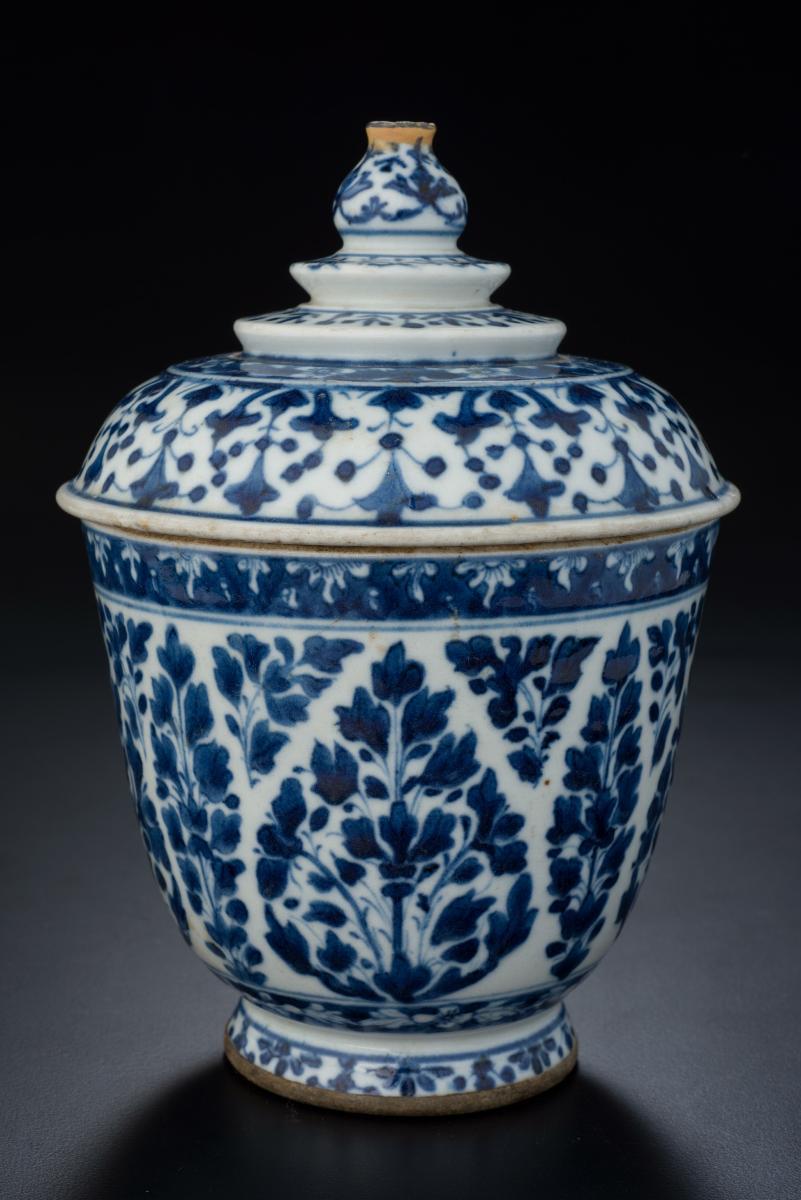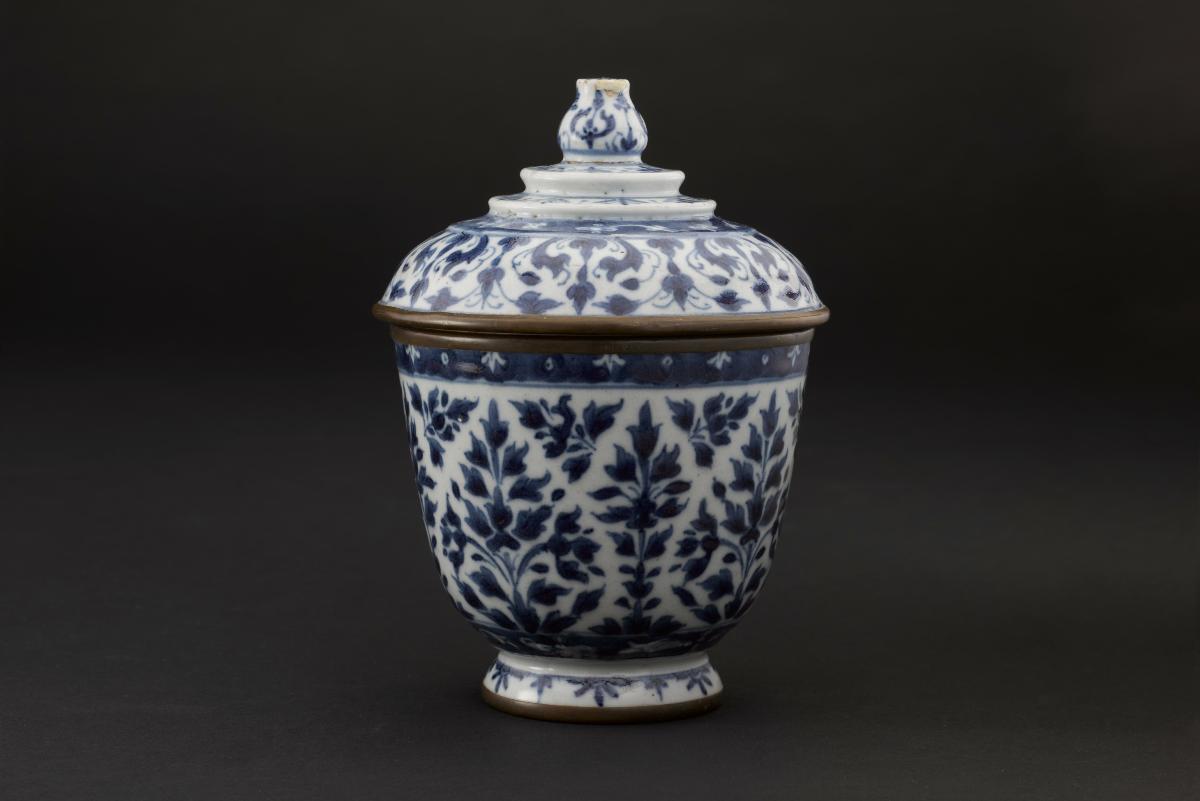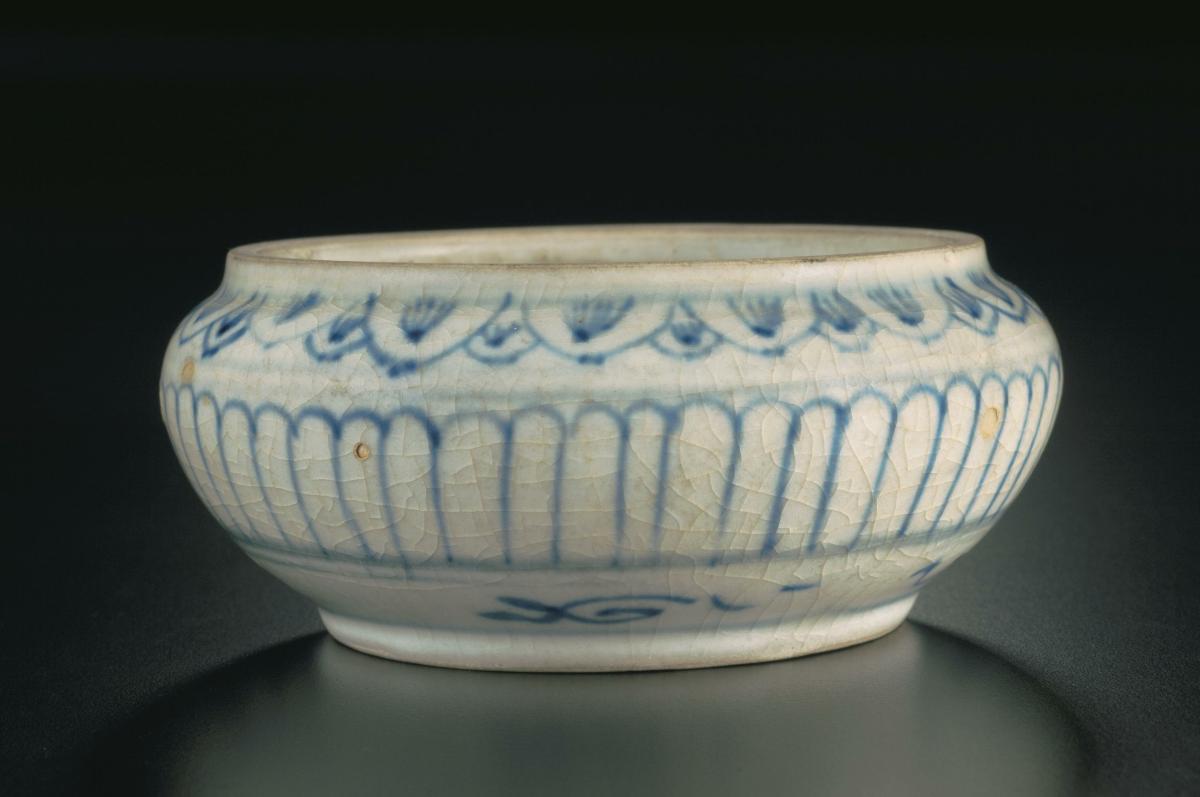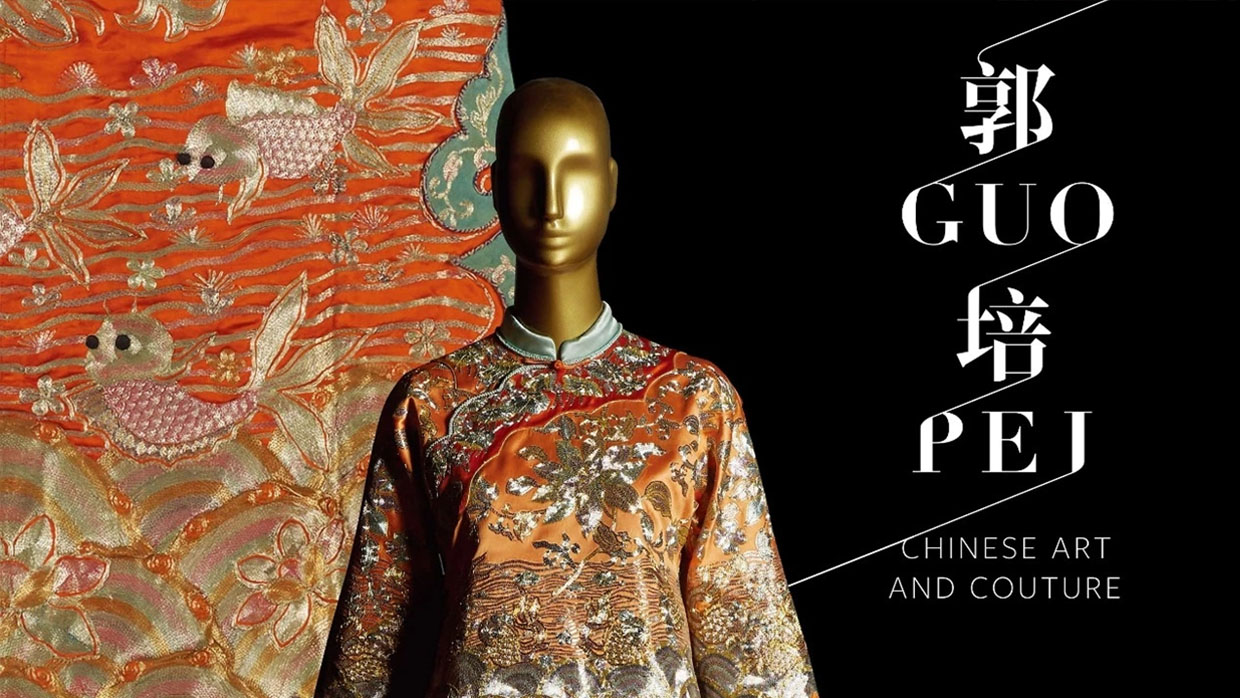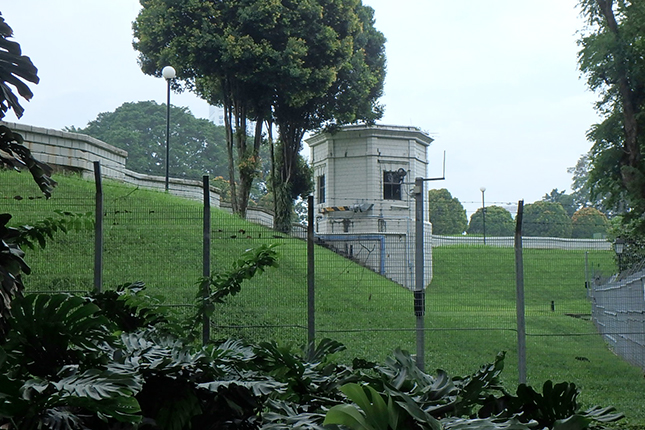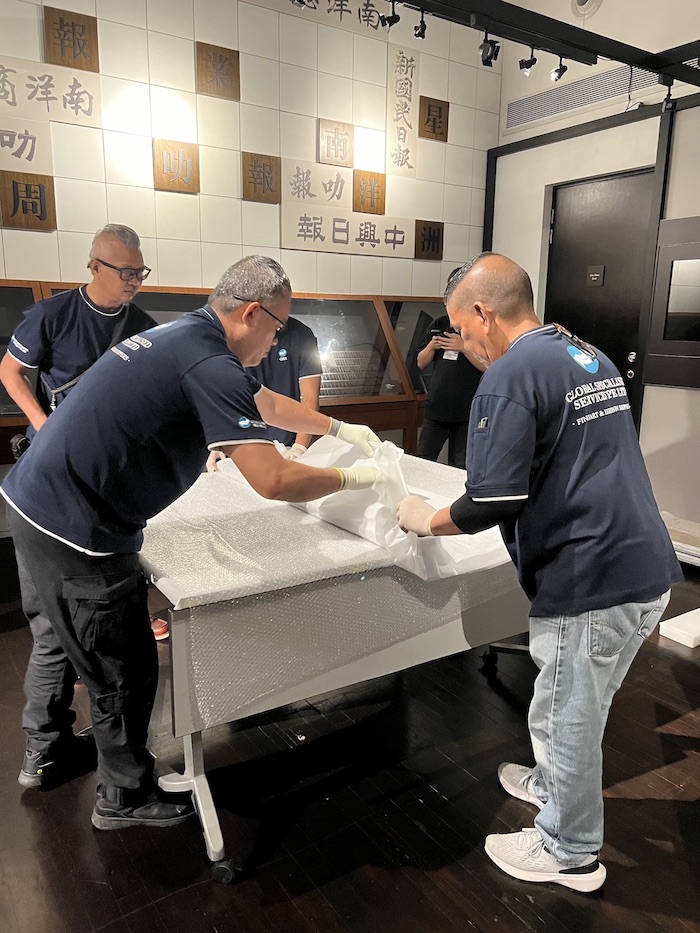of body: 50 cm
The main decoration on this jar's body is divided into four panels. Two panels share the same battle scene, which could have been taken from a Ming tale titled, 'Xue Rengui Crosses the Sea and Subdues the East - White Robe Tale' (Xue Rengui kuahai zhengdong bai pao ji). The brave man at the top of the ship's pole could be Xue Rengui, a naval soldier who helped Emperor Tang Taizong (Li Shimin, r.627-649) fight the Eastern Liao enemy.The cover of this large jar is decorated with the 'hundred antiquities' (bogu) motifs, a popular subject for porcelain decoration in the 17th and 18th centuries. Other than bronze vessels, the antiquities depicted here include vases, 'ruyi' sceptres, copper cash, painting and calligrapy scrolls, and a chess set. These items have auspicious meanings. The ruyi sceptre connotes 'all wishes will come true', while the Chinese term for vase is homophonous with that for peace ('ping'). The triple-gourd motif, with floral scrolls around the jar's cover, signifies fertility. The motif is repeated around the foot of the jar.






